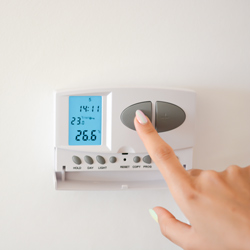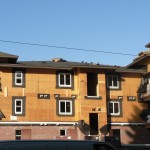 When you’re consulting on a big project like installing HVAC in multiple dwelling units (MDU), you need to know all of the factors at play. The biggest consideration with MDU is whether to install a central system or to take a compartmentalized approach and install HVAC into individual units.
When you’re consulting on a big project like installing HVAC in multiple dwelling units (MDU), you need to know all of the factors at play. The biggest consideration with MDU is whether to install a central system or to take a compartmentalized approach and install HVAC into individual units.
If your customer is looking for the best long-term solution, the compartmentalized approach may be their best bet. This approach provides residents with superior air quality and the ability to regulate their own unit. And there are advantages in terms of cost.
How HVAC systems stack up
Let’s look at the stack effect. Tall buildings act somewhat like chimneys, moving air through them in response to differences in air pressure. In cold weather, hot, buoyant air will move up through the building as cold air enters from the bottom of the building.
The stack effect also functions in the reverse with cooled buildings in warm weather, but because the variation between outside and inside temperatures is lower, the effect is not as evident.
According to a study by the International Code Council, stack effect behaves differently in each building, and it is difficult to predict. A common approach is to use central systems to keep air constantly moving. The risk with this is that some floors may be over-ventilated while others are insufficiently ventilated, which can result in an unhealthy buildup of contaminants or mould.
The stack effect is minimized in a compartmentalized system because it only deals with stack effect from the floor to ceiling of a unit. The job of regulating the air is much easier, and the equipment will be far more effective. This means that each unit will have better air quality.
Who has control?
In this era where we expect everything to be customized, the issue of control is important. In most centralized systems, building management controls air pressure and temperature. Central systems such as a four pipe vertical stack offer a combination of centralized operation and unit control. These are an option your customers should consider, but they are costly. The more affordable means of giving each unit control over their air quality is the compartmentalized approach.
Long term costs to consider
In big projects such as MDUs, cost is always going to be a major factor. But your customers should consider the ongoing costs as well as the cost of installation.
In a building with a central HVAC system, the operational cost is handled by building management. This cost will need to be factored into rental prices or strata fees. And in the event of equipment failure, building management will be faced with a large bill.
With a compartmentalized system, the upkeep is the responsibility of individual units. Repairs for these less complex systems are more affordable. Even in rental buildings where management is responsible for cost, these smaller repairs are much easier to work into a budget.
Keeping it airtight
Regardless of whether your customer opts for the centralized or compartmentalized approach, the best way to mitigate stack effect and regulate temperature in MDUs is to create an airtight environment. The building envelope is critical for both a central and compartmental system, and with a compartmentalized approach, your customer will also need individual units to be airtight.
The key to protecting the integrity of the building envelope over the long term is to ensure that all entry and exit points maintain the seal of the building. This means selecting the right vents and vent covers designed for long-lasting protection.
Your customer is going to select the HVAC system that makes the most sense to them, and a conversation about these factors will help them make an informed decision.


